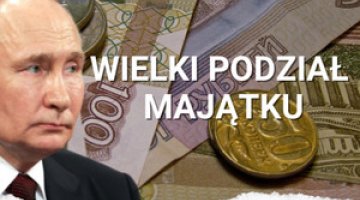The stagnation of the Russian economy
Although the economy has already entered a period of stagnation, Prime Minister Dmitri Medvedev’s government has not yet put forward any solutions that would help to halt the decline of macroeconomic indicators. On the one hand, the government is counting on an improvement in the economic situation in the European countries and an increase in demand for Russian raw materials; on the other hand, it recognises that the economy’s potential for growth, which according to some estimates could even reach 4-5% per year, has not yet been exhausted.
The top priority in economic policy remains the implementation of President Vladimir Putin’s post-electoral decrees, which have formed the basis for evaluating the government’s work.
The government’s optimism
The government maintains that the poor performance in the first quarter (GDP rose by just 1.6%) is merely temporary, and that from the second half of this year an increase in GDP of at least 3% will be possible, which would allow the achievement of an increase in GDP of 2.4% by the end of 2013. The government’s good mood has not been spoiled by other, more pessimistic predictions by the European Bank for Reconstruction and Development, that Russia’s GDP growth in 2013 will only reach 1.8 per cent, indicating that the decline is not temporary in nature, but is rather a permanent trend.
Nor did the government mention the details of the 8% drop in state investment which is planned in 2013. This is a result of the regions reducing their investment plans; they have been forced to assign a significant portion of their income to wage hikes for public sector employees, in order to conform with President Putin’s post-electoral decrees. State-owned corporations are also reducing their investment programs; these fell by 10% in 2012 and are expected to fall further (by 12-13%) in 2013. The largest investment cuts, in excess of the figure of 27% recorded last year, have been made by Gazprom; in the period 2014-2015, the gas company forecasts further cuts in investment of 30%.
In the government’s estimation, a forecast of a rise in consumer demand requires a 1% decrease. This has been caused by the drop in the growth rate of the public’s income and their rising debt, while high interest rates on consumer loans are being maintained. Household debt has risen from 14% in 2012 to a projected level of 17% in 2013.
The government’s mood has not been spoiled by Central Bank information that nearly US$26 billion in capital left Russia in the first quarter of 2013. It was thus necessary to adjust the estimates of capital outflows in 2013 from US$10 billion to US$30-35 billion.
Proposed solutions to stimulate the economy
One of the measures proposed by the Ministry of Economic Development to stimulate growth is easing monetary policy, which will reduce interest rates and increase the availability of loans. Minister Belousov has gone even further in his proposals, proposing amendments to the law on the Central Bank which would increase its responsibility for stimulating economic growth.
Another proposal is to limit increases in tariffs for electricity, heat, municipal and housing fees, as well as transportation tariffs.
The Economic Development Minister also suggested stimulating investment activity by using resources from the National Welfare Fund and the Pension Fund for the development of infrastructure projects (such as the construction of a high-speed rail line running from Moscow to Kazan; increased capacity for the BAM (Baikal-Amur Railway) modernising the Trans-Siberian railway, developing transport nodes for suburban Moscow; developing and modernising road construction, etc.).
Adjustments to the budget
The weak economic growth rates have not substantially affected the draft law prepared by the Ministry of Finance to amend the federal budget for 2013 and the years 2014-2015, which the government submitted to the State Duma on 7 May. The macroeconomic indicators (GDP, inflation) adopted in the budget for this year were retained, upon the assumption that if necessary they can be adjusted later. The amounts of the already-approved revenues and budget expenditures for this year and the size of the deficit (0.8% of GDP) were not altered, although shifts were made within each spending group.
It seems that this will not be the last fiscal adjustment which will have to be made, and the persistence of the decline in macroeconomic indicators will make it necessary to seek additional sources of revenue to cover the planned expenditures.
Conclusions
The government’s optimism in the face of the weakening macroeconomic indicators may be a cause for surprise. Prime Minister Medvedev described the situation as “average”, and stated that achieving a 4 to 5-percent increase in GDP was a realistic possibility. Taking into account the growth rates for GDP (as revised by the Ministry of Economic Development from 3.7% to 2.4% in 2013, and from 4.3% to 3.7% in 2014), the government’s position seems to be at odds with the real situation. This has raised concern among independent experts, whose evaluations are much more pessimistic and foresee Russia going into recession in the second half of 2013, especially in view of the expected decline in the prices of crude oil and natural gas exports, caused by a drop in the demand from European consumers and competition from American shale gas.
Individual members of the present government have given differing views in assessing the reasons for the economy’s declining performance, despite oil prices remaining high on the world market. There have also been differences regarding the allocation of the reserve funds. The Minister of Finance favours allotting the additional oil and gas revenues to the Reserve Fund and National Welfare Fund, while the Minister of Economic Development has proposed investing them in the development and modernisation of the economy, including infrastructure projects, although the effect of the latter will only be felt after several years. However, there are concerns that some of these funds will fall into private pockets, as illustrated by the investments made in connection with the APEC summit in 2012 in Vladivostok, and the preparations for the Olympic Winter Games in Sochi in 2014.
In the absence of any vision for the stimulation of the Russian economy, it is difficult to expect the government to undertake any qualitatively new challenges based on fundamental systemic changes, or that it will devise a new economic policy appropriate to the current difficult situation, and which reduces the state’s dependence on revenue from the fuel and energy sector.





